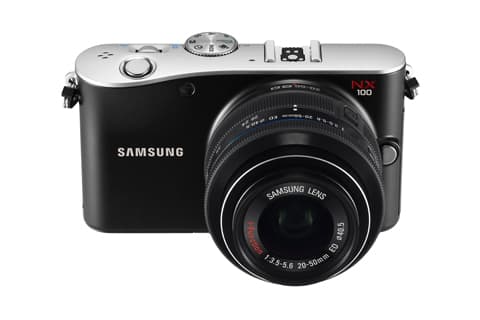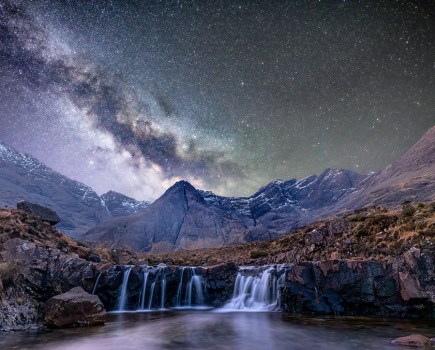Samsung has unveiled the Samsung NX100, a mirrorless system camera which allows control of key exposure variables with a twist of the lens focusing ring.
In a move that may appeal to some traditionalists, the Samsung NX100 boasts ?i-Function?. The technology aims to allow the photographer to quickly select settings by first pressing a button situated on the lens and then use the focus ring to adjust characteristics such as aperture, shutter speed, EV, white balance and ISO.
By improving communication between the camera body and lens – allowing the user to choose and control image variables via the lens itself – Samsung hopes to make the system easier to operate.
?It delivers total image control with fast manual settings to ensure quick and easy image capture, and provides customised settings optimised for the lens being used,? said a spokesman.
?Our unique and pioneering i-Function Lens stands out from the competition as an example of our unparalleled innovation which will appeal to every photographer,? added Samsung Digital Imaging Division President SangJin Park.
Samsung claims this will help ?beginners? by optimising an automatically set scene mode with the lens that the camera is being used with. An icon on the lens itself denotes the type of shots it is designed for (though a mode dial on the back of the camera can be used to select other scene modes when required).
i-Function should also benefit more experienced photographers by enabling them to ?instantly set? parameters in P, A, S and M modes.
Described by Samsung as ?curvy? (as opposed to ?boxy?) the NX100 borrows its 14.6-million-pixel APS-C-size CMOS imaging sensor, 3in AMOLED screen and AF system from the Samsung NX10, which it will run alongside after its official launch at the end of October.
AP has learned that a firmware upgrade, also due next month, will equip the Samsung NX10 with i-Function capability.
Samsung has unveiled two new lenses, both with i-Function: a 20-50mm f/3.5-5.6 ED ?standard? zoom; and a 20mm f/2.8 pancake lens. Prices for these have not yet been released.
Samsung NX100 price and availability
We understand that the Samsung NX100 will cost around £450, including the new 20-50mm lens, though this price has not yet been officially confirmed.
Samsung has confirmed, however, that it plans to launch a 60mm macro and 18-200mm lens in the first half of 2011, plus three more optics later next year – signalling its intention to plough considerable resources into developing its NX system over the next 12 months.
Though the Samsung NX100 is clearly aimed at people unfamiliar with a system camera – as well as more experienced enthusiast photographers – Samsung UK?s Digital Imaging Division product manager Paul Scott conceded that the lack of a built-in flash may put off some newcomers to this market.
An external flash will be available separately, as will an EVF (201,000 pixel resolution) and GPS unit (prices have yet to be announced).
Though billed as slim, sleek and stylish the NX100?s dimensions are not worlds apart from the NX10 when the cameras are sat side-by-side.
The Samsung NX100 measures 120.5x71x34.5mm, compared to the 123x87x39.8mm NX10 (excluding the projected parts of the camera in both cases). The camera body weighs 282g, compared to the 353g NX10.
Samsung has boosted the maximum equivalent ISO sensitivity from a top limit of ISO 3200 on the NX10. This is expandable to ISO 6400 on the Samsung NX100.
Features also include a 720 pixel movie mode and ?Sound Picture? – the latter allowing users to record audio while a photo is being taken.
The camera?s Smart Filter mode adds ?Halftone Dots? an effect designed to mimic the look of a canvas print. Other effects, including miniature and fisheye, can be applied alone, or together to an image – each altered picture being saved as a separate file, in-camera.
And a ?de-fog? effect aims to sharpen an image, boosting colour and saturation, according to Samsung.









